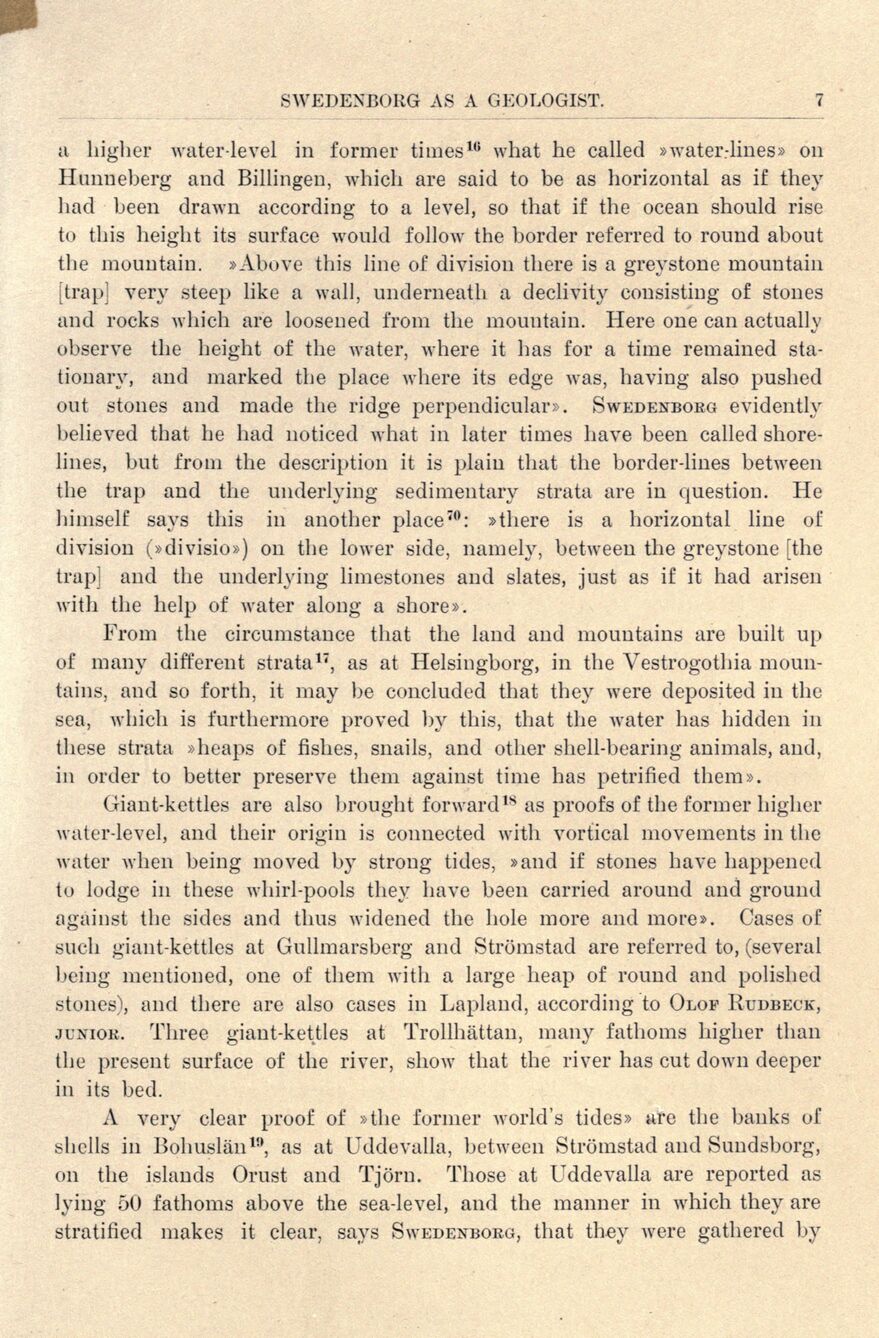
Full resolution (JPEG) - On this page / på denna sida - Sidor ...

<< prev. page << föreg. sida << >> nästa sida >> next page >>
Below is the raw OCR text
from the above scanned image.
Do you see an error? Proofread the page now!
Här nedan syns maskintolkade texten från faksimilbilden ovan.
Ser du något fel? Korrekturläs sidan nu!
This page has never been proofread. / Denna sida har aldrig korrekturlästs.
u liigher waterlevel in former times10 what he called »water-lines» on
Hunneberg and Billingen, which are said to be as horizontal as if they
had been drawn according to a level, so that if the ocean should rise
to this lieiglit its surface would follow the border referred to round about
the mountain. »Above this line of division tliere is a greystone mountain
[trap verv steep like a wall, underneath a declivity consisting of stones
and rocks which are loosened from the mountain. Here one can actually
observe the height of the water, where it has for a time remained
sta-tionary, and marked the place where its edge was, having also pushed
ont stones and made the ridge perpendicular». Swedenborg evidently
believed that he had noticed what in later times have been called
shore-lines, but from the description it is plain that the border-lines between
the trap and the underlying sedimentary strata are in question. He
himself savs this in another place70: »tliere is a horizontal line of
division (»divisio») on the lower side, namely, between the greystone [the
trap] and the underlying limestones and slates, just as if it had arisen
with the lielp of water along a shore».
From the circumstance that the land and mountains are built up
of many different strata17, as at Helsingborg, in the Vestrogothia
mountains, and so forth, it may be concluded that the}r were deposited in the
sea, which is furthermore proved by this, that the water has hidden in
these strata »heaps of fislies, snails, and otlier shell-bearing animals, and,
in order to better preserve them against time has petrified them».
Giant-kettles are also brought forwardls as proofs of the former liigher
water level, and their origin is connected with vortical movements in the
water when being moved by strong tides, »and if stones have happened
to lodge in these whirl-pools they have been carried around and ground
against the sides and tlius widened the hole more and more». Cases of
such giant-kettles at Gullmarsberg and Strömstad are referred to, (several
being mentioned, one of them with a large heap of round and polished
stones), and there are also cases in Lapland, according to Olof Rudbeck,
junior. Three giant-kettles at Trollhättan, many fathoms liigher than
the present surface of the river, show that the river has cut down deeper
in its bed.
A very clear proof of »the former world’s tides» are the banks of
sliclls in Bohuslän1”, as at Uddevalla, between Strömstad and Sundsborg,
on the islands Orust and Tjörn. Those at Uddevalla are reported as
lying 50 fathoms above the sea-level, and the manner in which they are
stratified makes it clear, savs Swedenborg, that they were gathered by
<< prev. page << föreg. sida << >> nästa sida >> next page >>